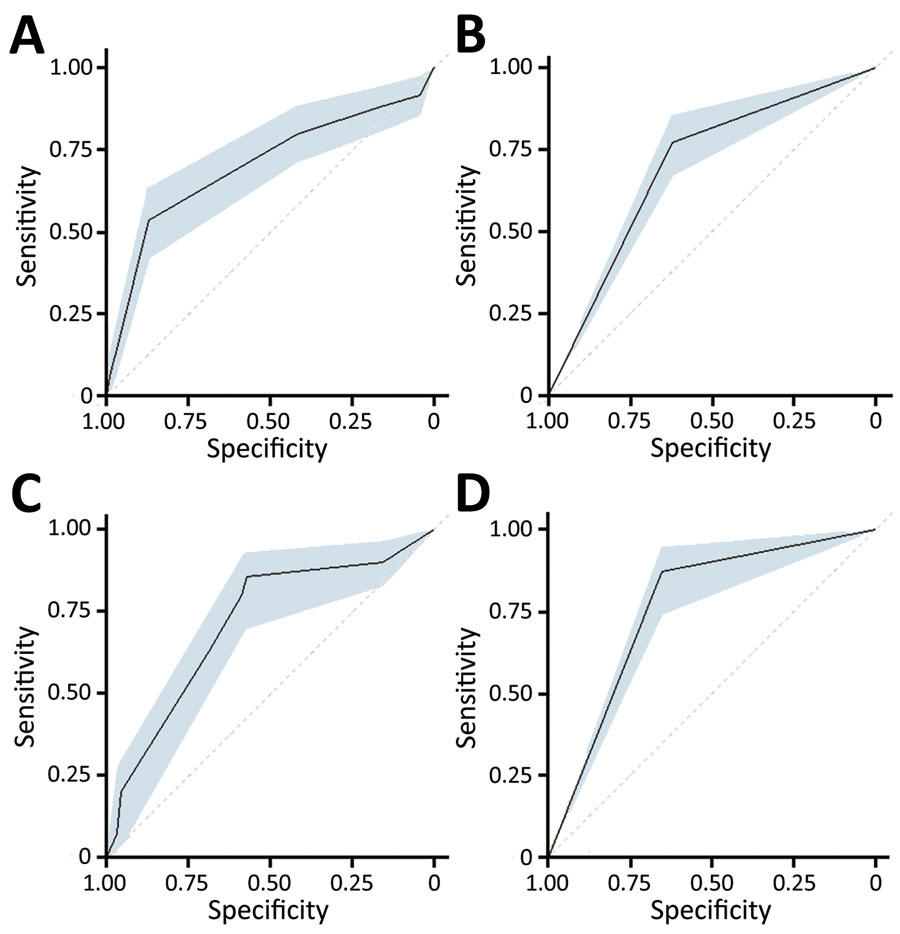Risk Prediction Score for Pediatric Patients with Suspected Ebola Virus Disease
Alicia E. Genisca
1
, Tzu-Chun Chu
1, Lawrence Huang, Monique Gainey, Moyinoluwa Adeniji, Eta N. Mbong, Stephen B. Kennedy, Razia Laghari, Fiston Nganga, Rigo F. Muhayangabo, Himanshu Vaishnav, Shiromi M. Perera, Andrés Colubri
2, Adam C. Levine
2, and Ian C. Michelow
23
Author affiliations: Brown Emergency Medicine, Providence, Rhode Island, USA (A.E. Genisca, H. Vaishnav, A.C. Levine); Alpert Medical School of Brown University, Providence (A.E. Genisca, A.C. Levine, I.C. Michelow); University of Georgia, Athens, Georgia, USA (T.C. Chu); Brown University, Providence (L. Huang, M. Adeniji); Rhode Island Hospital, Providence (M. Gainey); International Medical Corps, Goma, Democratic Republic of the Congo (E.N. Mbong, R. Laghari, F. Nganga, R.F. Muhayangabo); Ministry of Health, Monrovia, Liberia (S.B. Kennedy); International Medical Corps, Washington, DC, USA (S.M. Perera); University of Massachusetts Chan Medical School, Worcester, Massachusetts, USA (A. Colubri)
Main Article
Figure 6

Figure 6. Comparison of strength of discrimination using areas under the curve for Pediatric Ebola Risk Score (PERS) and World Health Organization criteria for study of risk prediction score for pediatric patients with suspected Ebola virus disease in Democratic Republic of the Congo, 2018–2019. A) PERS applied to data including no known Ebola contact (n = 1,336); B) World Health Organization criteria applied to data including no known Ebola contact (n = 1,336); C) PERS applied to data excluding no known Ebola contact (n = 426); and D) World Health Organization criteria applied to data excluding no known Ebola contact (n = 426). The shaded blue regions within each of the panels represent the confidence bands for the areas under the curve.
Main Article
Page created: April 11, 2022
Page updated: May 22, 2022
Page reviewed: May 22, 2022
The conclusions, findings, and opinions expressed by authors contributing to this journal do not necessarily reflect the official position of the U.S. Department of Health and Human Services, the Public Health Service, the Centers for Disease Control and Prevention, or the authors' affiliated institutions. Use of trade names is for identification only and does not imply endorsement by any of the groups named above.
